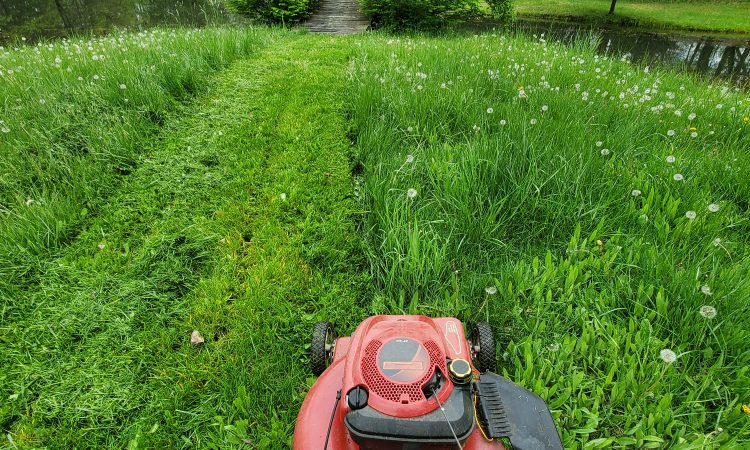How Often Should You Mow Your Lawn and What to Do With Grass Clippings: Leave or Remove?

We all love a lush and vibrant lawn, and keeping yours looking its best is easy! Just make sure to keep on top of the regular maintenance, including those all-important regular mowings. By following the right mowing practices, you’ll help prevent any issues like moisture build-up, diseases, and those pesky weeds.
Moisture, Diseases, and Weeds
Frequent mowing keeps your lawn healthy by improving air circulation, which reduces moisture buildup and the risk of disease. Tall grass provides a favorable environment for weeds, but regular mowing encourages the growth of grass roots, giving them the advantage over unwanted plants.
Grass Growth Is Seasonal
How often you should mow depends largely on the season.
- Summer: In the middle of summer, grass growth often stagnates due to high temperatures and lack of water. You can mow less frequently during this period to avoid stressing your lawn.
- Winter: When soil temperatures drop, grass growth typically stops. Mowing is not recommended, as it can damage your turf.
- Spring and Fall: These are the peak growth periods for most grass types due to moderate temperatures and adequate rainfall. Grass can grow up to five inches per week, depending on the variety. Some grasses thrive better in summer, so adjust your mowing schedule accordingly.
Mulching or Not?
After mowing, you may wonder what to do with the grass clippings. Both leaving them and removing them have benefits.
- Mulching: Leaving clippings on the lawn allows nutrients to be reabsorbed by the soil, helping to retain moisture and moderate soil temperature. This is particularly beneficial during dry periods. Additionally, mulching saves you time as you won’t need to collect and dispose of the clippings.
- Removing Clippings: However, leaving clippings can sometimes lead to problems, especially during rainy periods, which can cause the clippings to spread unevenly and promote fungal growth. Excessive mulch can suffocate grass, especially if mowing is infrequent. Clippings may also contain weed seeds, leading to unwanted growth. In such cases, using a leaf blower to remove clippings is advisable.
Mow Like a Pro
For the best results, follow these mowing tips:
- Frequency and Length: Avoid cutting the grass too short in one go. Mow regularly, removing about a third of the grass blade each time. Keep the grass at least 3 inches long, or 4 to 5 cm if the lawn is frequently used, such as by children playing. During winter or hot summers, aim for 6 cm to protect the roots from cold and sun.
- Equipment: Always use sharp blades to cut grass cleanly and avoid damaging the stalks.
- Timing: Avoid mowing a wet lawn to prevent clogging the mower and achieving poor results.
- Direction: Change the mowing direction each time to strengthen the grass by not constantly bending it in the same way.
By following these guidelines, you can maintain a healthy and attractive lawn that thrives throughout the year.

